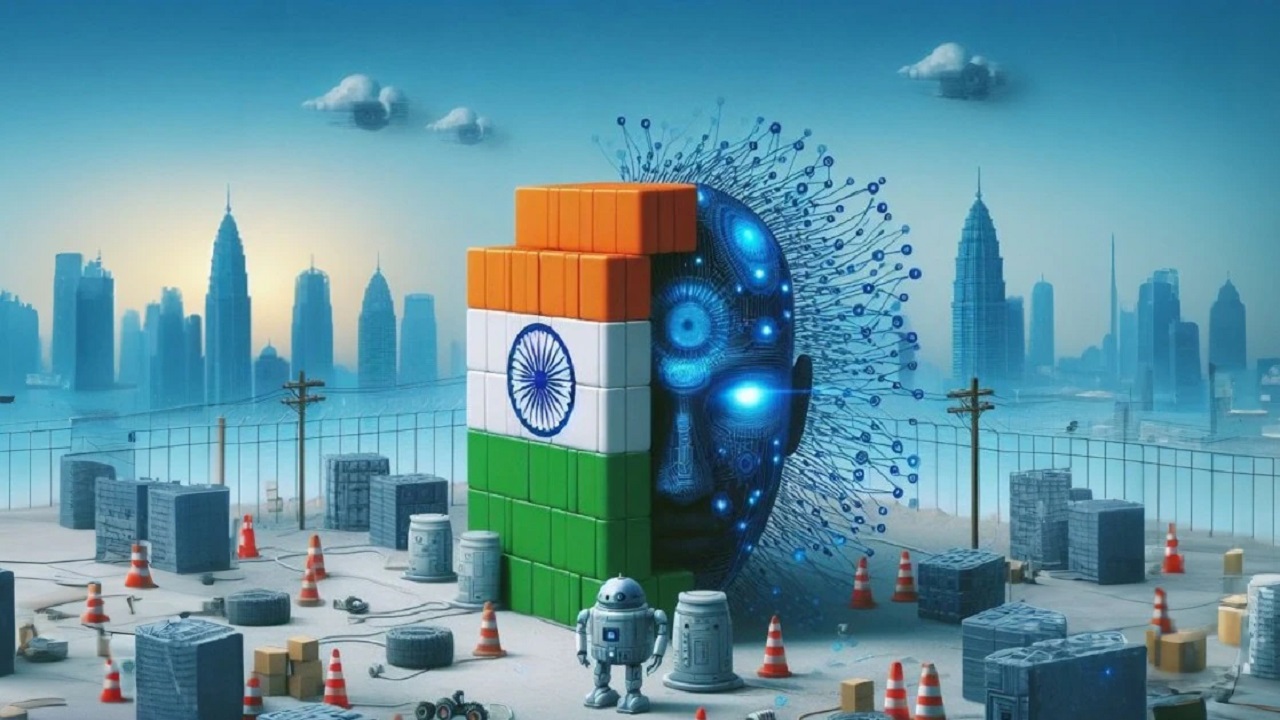India's Own AI Model: A Step Towards Digital Independence
Context
Artificial Intelligence (AI) is rapidly transforming industries globally, becoming a key driver for economic growth, national security, and technological leadership. However, most AI models are currently controlled by a few major tech companies, which raises concerns about data privacy, high computing costs, and reliance on foreign technologies.
To address these challenges, the Indian government has launched the ₹10,370 crore IndiaAI Mission to develop its own AI models. The aim is to create solutions that cater specifically to India's cultural, linguistic, and societal needs, while also strengthening India’s digital sovereignty. Union IT Minister Ashwini Vaishnaw has invited proposals from startups, researchers, and entrepreneurs to build these AI models using Indian datasets.
Key Features of India’s AI Model
-
Powerful Computing with GPUs
- The AI model will be launched with 10,000 GPUs, with plans to expand to 18,693 GPUs.
- GPUs (Graphics Processing Units) are crucial for large-scale data processing in machine learning, video editing, and deep learning.
-
Affordable AI Computing
- The cost of AI computation will be less than ₹100 per hour after a 40% government subsidy.
- This is far more affordable compared to global AI models, which charge $2.5–$3 per hour.
-
Multidimensional Applications
- The AI model will support healthcare, education, agriculture, climate action, and governance, leading to large-scale transformation across these sectors.
Why India Needs Its Own AI Model
-
Fostering Innovation & Research
- India aims to develop AI models that address the country’s unique challenges, ensuring technological independence and global competitiveness.
-
Promoting Ethical AI
- The initiative will focus on creating inclusive, fair, and bias-free AI that reflects India's diverse social and cultural context.
-
Strengthening Digital Sovereignty
- The goal is for India to control the entire AI supply chain, from data collection to hardware and software development, reducing dependency on foreign AI solutions.
-
Ensuring Data Security
- India will focus on AI bias reduction, explainable AI, and privacy strategies to ensure Indian data remains protected from foreign systems.
Indian Efforts to Develop AI
- IndiaAI Mission: A national initiative to build a robust AI ecosystem.
- IndiaAI Safety Institute: Focused on AI risk management and safe AI frameworks.
- IndiaAI Innovation Centre: Responsible for developing Large Multimodal Models (LMMs) and domain-specific foundational models.
Government's Key Strategies & Developments
-
Building India’s AI Model
- The government has been collaborating with startups, researchers, and academic institutions for the past 1.5 years to develop a world-class AI model.
- This project is expected to be completed within 4 to 8 months.
-
Hardware Support: 18,693 GPUs Approved
- 18,693 high-end GPUs will be supplied by 10 companies to support AI research.
- Yotta (Hiranandani Group) will supply the largest number, with 9,216 GPUs.
-
Affordable Computing for AI Development
- The government will establish a common compute facility to offer affordable GPU access to startups and research institutions.
- Pricing:
- High-end GPUs: ₹150 per hour
- Lower-end GPUs: ₹115.85 per hour
- After the 40% subsidy, the cost will be around $1 per hour, significantly lower than global rates.
-
AI Applications in Key Sectors
- The government has selected 18 AI applications for funding, with a focus on:
- Agriculture: AI solutions to boost productivity.
- Learning Disabilities: AI-powered tools for education.
- Climate Change: AI models for environmental conservation.
- The government has selected 18 AI applications for funding, with a focus on:
Why India is Investing Heavily in AI
- Reducing Dependence on Foreign AI: Strengthening India’s indigenous AI ecosystem.
- Multilingual AI: Developing AI that understands India’s diverse languages.
- Supporting Startups & Researchers: Providing affordable computing to fuel innovation.
- Competing Globally: Keeping up with countries like the US and China, which are leading in AI advancements.
Challenges & Future Outlook
-
Potential Challenges
- Infrastructure Development: Ensuring seamless GPU availability for researchers.
- Skilled Workforce: Training AI professionals to create advanced models.
- Regulatory Frameworks: Developing strong AI ethics, data privacy, and security guidelines.
-
Future Impact
If successful, the IndiaAI Mission will:- Transform India into a global AI powerhouse.
- Reduce reliance on foreign AI systems.
- Drive technological progress in key sectors like healthcare, education, and agriculture.
Conclusion
By making AI computing affordable, ethical, and India-centric, the IndiaAI Mission will empower businesses, researchers, and society. It will ensure that India remains a key player in AI innovation, strengthening its technological independence and contributing to global AI advancements.



_(10).jpg)
Comments (0)